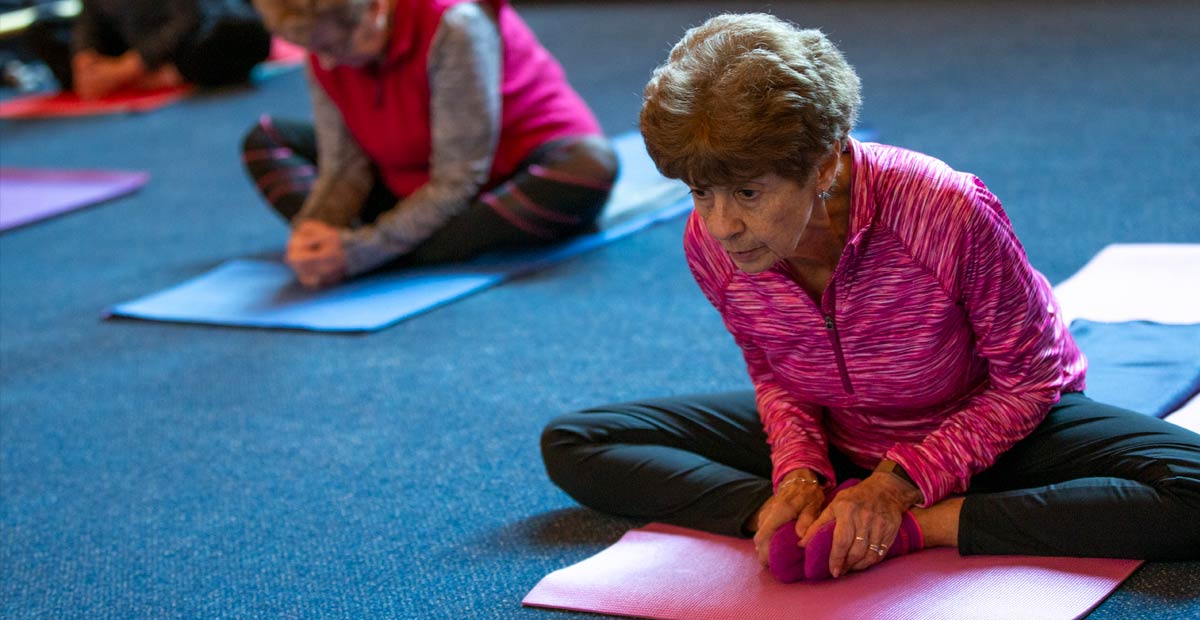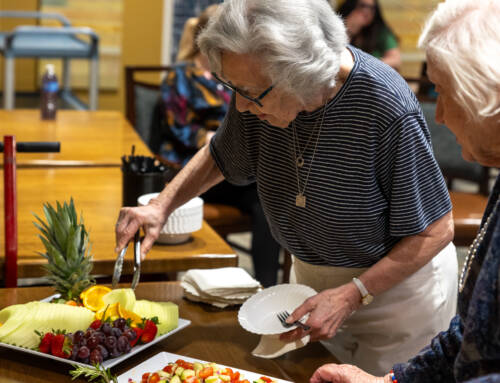Some people consider winter to be “the most wonderful time of the year.” However, for those with chronic joint pain, the season’s downward-shifting temperatures can make it the most painful time of the year.
There is no exact science behind the alleged link between cold weather and an increase in stiff, painful joints. However, those who experience a change in mobility during winter months will agree that the link is more than an old wives’ tale.
“Pain is a difficult thing to quantify,” said Dr. John Mast, medical director at Masonic Village at Elizabethtown. “Many residents complain of increased pain with barometric or weather changes. If that’s what they experience, then the two are connected.”
People with ligament injuries, nerve pain from pinched nerves, or who underwent joint-replacement surgery are all susceptible to cold-sensitive joints. However, it most commonly affects those with arthritis. Nearly 50 percent of people ages 65 years or older are diagnosed with some form of arthritis, whether it is osteoarthritis, rheumatoid arthritis or gout, according to the Centers for Disease Control and Prevention (CDC).
The popular theory of joint expansion and contraction attempts to explain increased joint discomfort in cold weather, but Dr. Mast thinks a decrease in activity during the winter is a key contributor.
“When individuals are less active, arthritis is much worse, since exercise is the most beneficial treatment for arthritis,” he said.
Although you can’t instantly change the weather, you can always tweak your activity level. Masonic Villages’ wellness centers give residents many opportunities to remain active indoors. These include fitness classes, cardio and weight equipment, indoor pools, walking paths, sports courts and more.
“An arthritic joint is like a rusty hinge. Bone spurs form and restrict the affected joint’s range-of-motion, just like the rust which keeps a hinge from moving. The best way to make a rusty hinge work better is to move it back and forth repeatedly and to keep it moving. The same goes for an arthritic joint,” Dr. Mast said.
Additionally, Dr. Mast says dressing warmly and applying heat, ice or topical treatments like Biofreeze® and Aspercreme® with lidocaine may provide temporary relief to joints. Pain relievers such as Tylenol® can also help curb pain if taken at first signs of discomfort rather than when the pain becomes severe, and in safe doses (no more than 3,000 milligrams per day for an older person), according to Dr. Mast.
“Tylenol is the safest medication to use for pain,” Dr. Mast said. “We often encourage older patients to avoid using anti-inflammatory medications like Advil® frequently because of their potentially severe and risky side effects. They can cause kidney and heart failure, stomach bleeding and edema (swelling caused by fluid in body tissues).”
While taking a pill or applying a cream to the source of pain may appear to be the most convenient way to combat the bitter winter chill’s effects on joints, combining prevention and pain management is the best option. Regular exercise and treatment – when needed – will help maintain joint functionality, regardless of the season.

About the author: Molly Foster was a public relations associate/intern at Masonic Villages in 2018.




